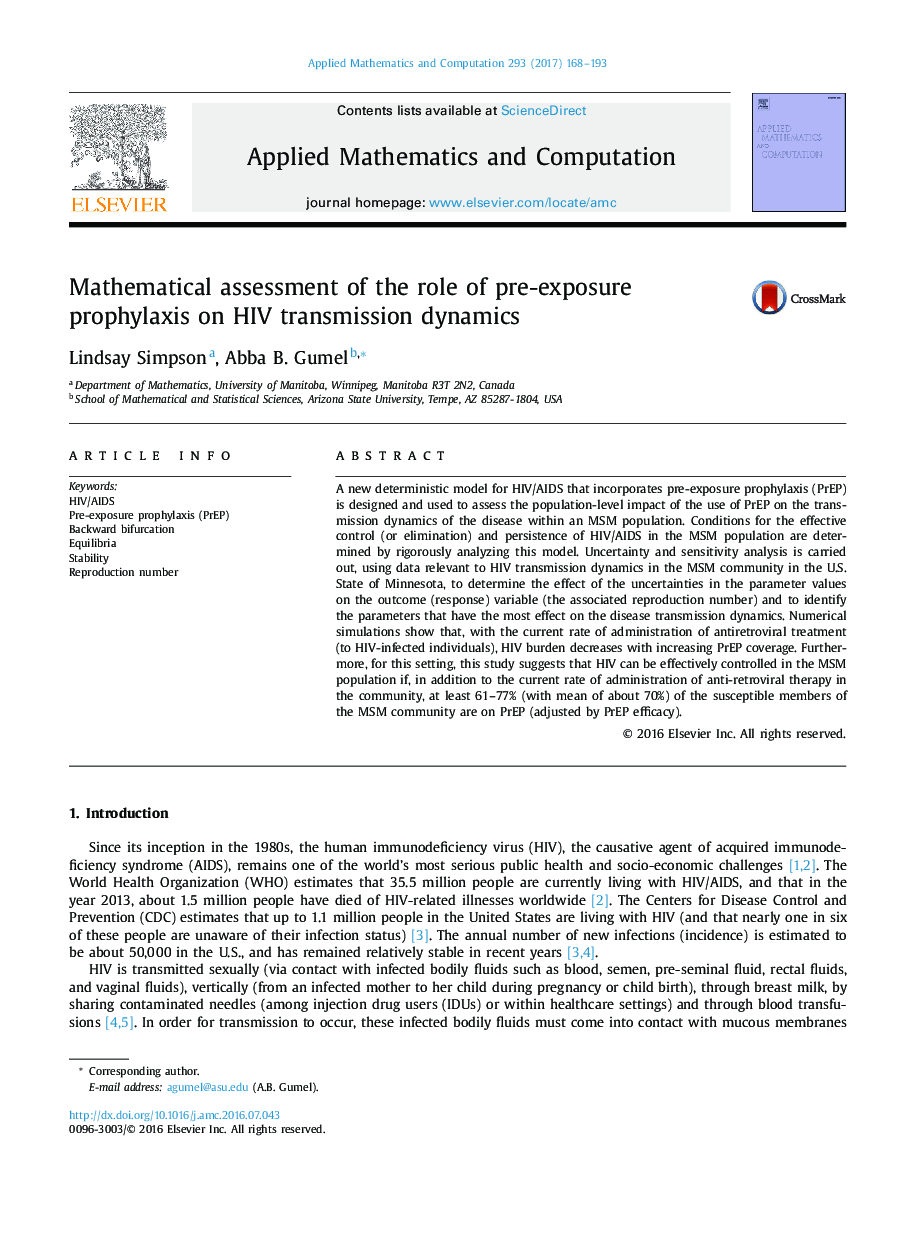| Article ID | Journal | Published Year | Pages | File Type |
|---|---|---|---|---|
| 4625565 | Applied Mathematics and Computation | 2017 | 26 Pages |
•We model the impact of pre-exposure prophylaxis (PrEP) in an MSM population.•The use of PrEP can induce backward bifurcation if its efficacy is not high enough.•The combined use of HAART and PrEP can lead to HIV control in the population.
A new deterministic model for HIV/AIDS that incorporates pre-exposure prophylaxis (PrEP) is designed and used to assess the population-level impact of the use of PrEP on the transmission dynamics of the disease within an MSM population. Conditions for the effective control (or elimination) and persistence of HIV/AIDS in the MSM population are determined by rigorously analyzing this model. Uncertainty and sensitivity analysis is carried out, using data relevant to HIV transmission dynamics in the MSM community in the U.S. State of Minnesota, to determine the effect of the uncertainties in the parameter values on the outcome (response) variable (the associated reproduction number) and to identify the parameters that have the most effect on the disease transmission dynamics. Numerical simulations show that, with the current rate of administration of antiretroviral treatment (to HIV-infected individuals), HIV burden decreases with increasing PrEP coverage. Furthermore, for this setting, this study suggests that HIV can be effectively controlled in the MSM population if, in addition to the current rate of administration of anti-retroviral therapy in the community, at least 61–77% (with mean of about 70%) of the susceptible members of the MSM community are on PrEP (adjusted by PrEP efficacy).
